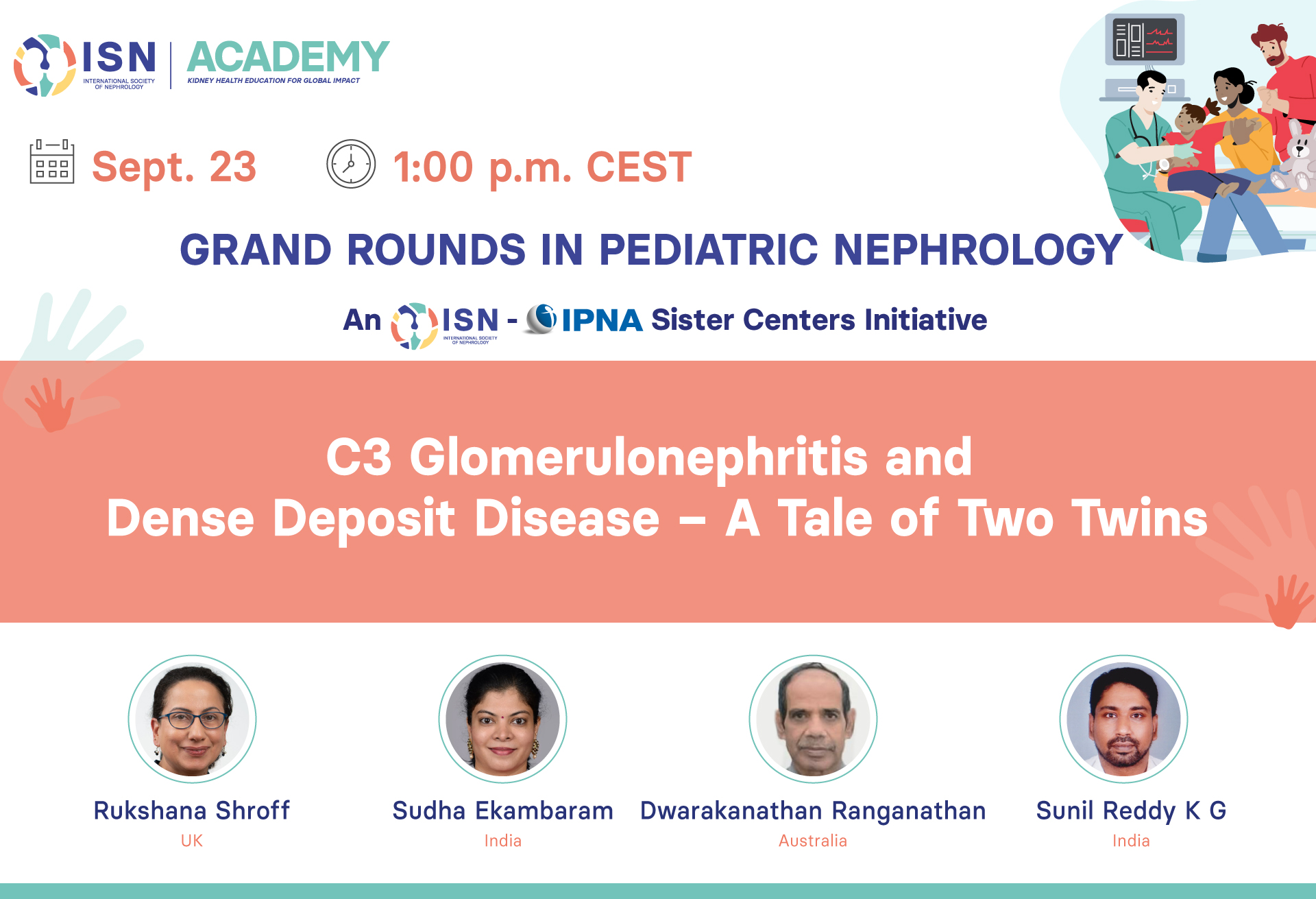REGISTRATION
Grand Rounds in Pediatric Nephrology – An ISN – IPNA Sister Centers Initiative – C3 Glomerulonephritis and Dense Deposit Disease – A Tale of Two Twins

C3 glomerulopathy is defined by the Consensus Group 2013 as a rare group of kidney disorders due to complement dysregulation. The single diagnostic criteria is dominant C3 deposition in kidney with clinical features of glomerulonephritis (GN). It includes both Dense Deposit Disease (DDD) and C3 GN which have overlapping clinicopathological features. Electron microscopy is necessary to distinguish both. Investigations include tests for complements, antibodies to complement regulating proteins, C3 NeF and genetic analysis. 70% of children and 30 to 50% of adults reach ESKD in 10 years. No treatment is universally effective, though immunosuppression may help.
Learning Objectives:
- What is C3 glomerulopathy?
- The role of Complement in C3 glomerulopathy
- Challenges in the diagnosis of C3 glomerulopathy
- Management of C3 glomerulopathy
Further Reading:
- F Fakhouri et al. Kidney International (2020) 98, 1135–1148
- Smith et al. Nat. Rev. Nephrol. 2019 March ; 15(3): 129–143
- Riedl, M et al. Pediatric Nephrol 2016; 32(1), 43–57
- Vivarelli M et al. A clinical approach to children with C3 glomerulopathy. Pediatr Nephrol 2022; 36: 521-535
